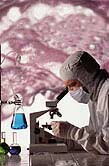Experimental devices might reduce risk of side effects, lower costs, researchers say
FRIDAY, April 24, 2015 (HealthDay News) — Two new devices may eventually lead to more accurate, less toxic methods of predicting how well a specific cancer drug might work on an individual’s cancer, researchers report. Findings from both studies were published in the April 22 issue of Science Translational Medicine.
The authors of one study designed a 3-mm long device outfitted with isolated pockets. Each pocket was loaded with very small sample of a cancer drug. Currently, 16 different cancer drugs can be tested at once, according to the study. The device was injected directly into melanoma, prostate, or breast cancer tumors in a group of mice. Tissue samples were then tested to see how the tumor reacted to the drugs. Those samples were then compared to how the mice reacted when given a drug’s full dosage. The device proved to be a reliable and accurate way to predict each drug’s effectiveness.
A second device has been tested on four humans, but only in a safety trial. This device — from researchers at the Fred Hutchinson Cancer Research Center and Presage Biosciences in Seattle — is a handheld microinjection device called “CIVO.” It’s specifically designed to test up to eight drug samples in tumors located near the surface of the skin, such as skin cancer, breast cancer, and lymphoma.
The researchers have demonstrated early success with this device in tests on mice and dogs, according to their latest study. The initial human tests were designed to assess the safety of the device, and to evaluate the patient and physician experience with the process, the researchers said. Initial results in people showed no serious side effects from the micro-injections of the drugs.
Abstract 1
Full Text (subscription or payment may be required)
Abstract 2
Full Text (subscription or payment may be required)
Editorial (subscription or payment may be required)
Copyright © 2015 HealthDay. All rights reserved.








